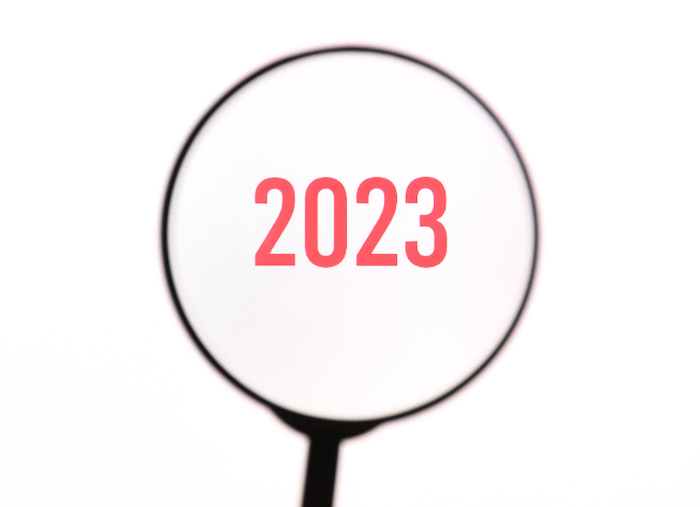 Another year of IP is behind us, and it is time to reflect on what mattered most—what decisions will affect practice for years to come and/or continue to play out in the courts as we move into 2024? While the commenters below have comprehensively identified most of the key moments, one elephant in the room that has been nearly unmentioned is U.S. Court of Appeals for the Federal Circuit Chief Judge Kimberly Moore’s campaign this year to oust Judge Pauline Newman from the chief U.S. IP court. While the case continues to play out in district court and is not a matter of IP law per se, many stakeholders have told IPWatchdog over the last months that, whatever the outcome, the damage has already been done to the reputation of the Federal Circuit, of which Judge Newman is a founding member. In September, the Judicial Council ordered that Newman be suspended from all cases at the recommendation of a Special Committee that includes Moore. She has since been working in her chambers part time, but with no clerks or paralegals. What happens next remains to be seen, likely in the New Year.
Another year of IP is behind us, and it is time to reflect on what mattered most—what decisions will affect practice for years to come and/or continue to play out in the courts as we move into 2024? While the commenters below have comprehensively identified most of the key moments, one elephant in the room that has been nearly unmentioned is U.S. Court of Appeals for the Federal Circuit Chief Judge Kimberly Moore’s campaign this year to oust Judge Pauline Newman from the chief U.S. IP court. While the case continues to play out in district court and is not a matter of IP law per se, many stakeholders have told IPWatchdog over the last months that, whatever the outcome, the damage has already been done to the reputation of the Federal Circuit, of which Judge Newman is a founding member. In September, the Judicial Council ordered that Newman be suspended from all cases at the recommendation of a Special Committee that includes Moore. She has since been working in her chambers part time, but with no clerks or paralegals. What happens next remains to be seen, likely in the New Year.
Below are reflections on other milestones from the past year—some positive, some negative, and some that maintained the status quo, but all worth mentioning.
Happy Holidays and New Year to All!!

Alden Abbott
Alden Abbott
Mercatus Center at George Mason University
“The four biggest 2023 judicial developments were the Supreme Court’s four decisions in: (1) Amgen v. Sanofi (standard for enablement, will make it harder in practice to patent functionally described genus claims, particularly for biologics, potentially could slow innovation in this area); (2) Abitron Austria v. Hetronic International (statutory language indicates that the Lanham Trademark Act does not extend to infringing conduct that solely occurs abroad, a decision which applies even when there may be consumer confusion in the United States); (3) Jack Daniels Properties, Inc. v. VIP Products LLC (trademark infringement action upheld, chewable dog toy designed to look like Jack Daniels whisky bottle could lead to confusion as to origin of a product, and was not protected by the First Amendment); and (4) The Andy Warhol Foundation for the Visual Arts, Inc. v. Goldsmith (Condé Nast’s use of an Andy Warhol print was not fair use and infringed the photographer’s copyright, a victory for copyright holders). In sum, the Supreme Court’s 2023 IP holdings further weakened (at least marginally) patent rights, strengthened copyright, and provided both good and bad news to trademark holders.
The two biggest Executive Branch policy decisions were strongly anti-patent. The Biden Administration regrettably (but unsurprisingly) continued to undermine patent rights. Two examples (unfortunately, more could be cited) merit special note. First, in December (see here), the Administration asserted (without statutory justification) that it could cite “excessive prices” to justify the exercise of Bayh-Dole march-in rights, thereby destroying high-tech patents. Second, the Biden Administration continued to support a World Trade Organization TRIPS patent waiver for COVID-19 medicines (see here and here).”
 Nathan Fonda
Nathan Fonda
Thompson Coburn
“The IP Edge Delaware opinion referring parties and lawyers to the Department of Justice and the state bar cannot be overlooked as one of the key moments in 2023. That opinion is the clearest example of a trend, primarily out of the District of Delaware, of increased judicial scrutiny and skepticism about litigation funding arrangements in IP cases. IP litigation can be an expensive endeavor, so litigation funding can serve an important role to assist litigants in protecting their rights, but there is also risk of abuse. Chief Judge Connolly’s opinion details a business model that abuses the patent system, taking advantage of unwitting individuals to provide the funders with almost all of the control of the litigation and potential upside while shielding them from liability for litigation tactics. These IP Edge cases are an extreme example, and the opinion will certainly cause them to be a cautionary tale, but it also signals to anyone involved with litigation funding or similar arrangements that the judiciary is going to take an active role to protect the system from abuse. Sunlight is the best disinfectant, so I think the added attention will not destroy the funding industry, but keep it honest.”

Darius Gambino
Saul Ewing
“I think 2023 was one of the biggest years for IP in a long time. We had 4 cases go to decision at the Supreme Court (Jack Daniel’s, Warhol, Abitron & Amgen). All of those cases will change the way we practice law in 2024 and beyond. In my opinion, Jack Daniel’s was the most significant decision of 2023, and you can already see the ripple effects in decisions like MSCF v. Vans (the ‘Wavy Baby’ sneakers case) and Hermes v. Rothschild (the ‘Meta Birkin’ NFT case). The last time we had this much IP activity at the Court was probably 2014, with Alice, Octane Fitness, Nautilis and Akamai, and those were all patent cases. I would argue that the last important trademark decision at the Court was Tam in 2017, and before that KP Permanent in 2004. The biggest copyright case of the last 30 years is Campbell (in 1994), and you can see that reflected in how much the Court referenced that decision in Warhol. Yes, we had other key copyright decisions in 2019 with Fourth Estate and Star Athletica, but they did not change the basic infringement analysis in the same way as Campbell and Warhol. The fact is, we don’t see much activity at the Court in the trademark and copyright spaces, so when we do, it is usually significant.”

Martin Henshall
Morgan Lewis
“A hot topic this year has been the rapid development of generative artificial intelligence (AI) tools, and the IP issues for generative AI tool developers, those in the creative industries, and brand owners.
Early court rulings, IP office guidance, and commentary have considered the authorship/ownership of copyright in AI-generated works. The U.S. Copyright Office and courts have held that an AI-generated work cannot be authored/owned by the generative AI tool itself because human authorship and creativity is required for a work to be protected by copyright. In contrast, the laws of other countries, such as the UK, do not expressly require human authorship for a work to benefit from copyright protection. However, the courts will still need to answer whether an AI-generated work can satisfy other legal requirements, such as that a work be “original” given that originality has generally been assessed by reference to the labor, skill and judgment of a human author.
In the trademarks space, brand owners are concerned by the risk of trademark infringement and dilution if, in response to a user query about their brand, an AI-generated response directs the user to a competitor, or an unrelated business with the same name. The courts have previously had to grapple with similar issues relating to the use of trademarks in the context of keyword advertising, but it remains to be seen whether the courts will take a similar approach in relation to the appearance of trademarks in an AI-generated response.”

Aashish Kapadia
McDermott, Will & Emery
“The launch of the Unified Patent Court (UPC) in mid-2023 was a significant moment for IP in the last year. In addition, Standard Essential patent (SEP) licensing has garnered much attention in 2023 upon a proposed regulation from the European Commission as well as a number of rulings from the High Court of Justice in London which indicate a geographical shift in top-down jurisprudence. This recent activity indicates that European authorities continue to explore the top-down approach as a tool to resolve FRAND royalty disputes.”
Steve Kunin
Maier & Maier
“In my opinion the Biggest Moments in IP for 2023 are:
- The Supreme Court’s decision in Amgen v. Sanofi addressing the scope of enablement requirement under 35 U.S.C. 112(a). This decision has had a profound impact on biotechnology patenting of biologics. The basic requirement is that the specification must enable the claimed invention throughout its entire scope, i.e., it must teach a skilled artisan how to make and use the claimed invention without undue experimentation applying the In re Wands factors. To obtain claims to a genus embracing thousands of species becomes daunting if not impossible. It is uncertain how many representative species within the scope of the genus must be described to be able to enable a claim to the genus.
- The Federal Circuit opinion in In re Cellect has surprised many in the patent community by holding that originally filed patents having earned term adjustment are subject to obviousness type double patenting based on the filing of continuation patents based on a one-way test necessitating the filing of a terminal disclaimer. A request for rehearing of the panel decision en banc is in progress.
- The founding of the C4IP association [in September 2022] led by David Kappos and Andrei Iancu, as well as other stellar thought leaders in the IP community, was an important undertaking that may provide impetus to major movement on issues that have perplexed the global IP communities. These efforts include addressing issues raised by pending IP legislation as well as discussions within the framework of the WTO and IP5.”
Edward Lanquist
Baker Donelson
“As always, the primary development in IP was technology, with that technology being AI. Just as has been true with any technology development, there has been much debate about the intersection between AI and IP. We know that AI will be critical for companies to become more competitive and to remain competitive moving forward. Understanding the tech and its application is the critical first step. We will soon realize that first principles of IP will allow us to advise clients on AI.”
Eli Mazour
Harrity & Harrity
“The end-of-year proposal by the administration to seize drug patents based on pricing is unfortunately the defining moment for IP in 2023. The passage of of the Bayh-Dole Act and Hatch-Waxman Act in the early 1980s shepherded an extraordinary era of medical innovation and access to drugs in America. The proposed rule risks upending that reality.
Many – like myself – naively thought that the administration’s 2021 decision to back waiver of IP rights for COVID-19 vaccines was a one-time, misguided effort to satisfy anti-patent extremists. The proposed rule suggests that opponents of pharma patents are actually firmly in control of administration policy.
In combination with the Patent Trial and Appeal Board (PTAB) being back in the business of invalidating patents already being – even fully -litigated at the district courts and the International Trade Commission, the administration’s message is clear: they will use the PTAB to invalidate valuable patents that they deem ‘low quality’ and seize valuable patents that they deem ‘high quality.’
Back in 2022, I wrote that I will be watching if the White House continues its trend of ideologically-driven decisions on IP issues. The answer in 2023 is a resounding yes.”
Suzanne Trivette
Crowell & Moring
“First, you can’t discuss 2023 without mentioning AI. Not only did this year bring significant AI-related regulation and potential legislation, but there are pending lawsuits across industries that could set important precedent about IP infringement. For example, ongoing lawsuits against fast-fashion entity Shein and generative AI companies Stability AI, Midjourney, and DeviantArt allege that AI algorithms were applied to infringe protected works.
Two other developments I would include are Supreme Court decisions. In May, the Court narrowed the copyright fair use doctrine in Andy Warhol Foundation for Visual Arts, Inc. v. Goldsmith. The Court held that the doctrine’s “purpose and character” factor examines whether the allegedly infringing use “has a further purpose or different character,” weighted against commercial motivations, rather than sweepingly considering whether the use is “transformative.” In June, the Court clarified the limited defenses available to parodies under trademark law in Jack Daniel’s Props., Inc. v. VIP Prods. LLC. The Court held that parodies are not given special First Amendment protection and instead are subject to the traditional Lanham Act likelihood of confusion test. Both of these decisions, which expand protection for brand owners, are likely to lead to more aggressive enforcement and increase risk for creators.”
Wendy Verlander
Verlander LLP
“In 2023, there was progress. The PREVAIL and PERA bills could dramatically diminish two of the most significant threats to patents.
There was confusion. In Amgen, the Supreme Court found patents not enabled for claiming a genus but disclosing only species, leaving all to wonder whether that decision also applied to predictable arts. In Cellect, the CAFC invalidated a patent in light of an earlier-expired related patent for obviousness-type double patenting, even though the Patent Office had never issued such a rejection and never required a terminal disclaimer. In Finjan and ABS, decided six days apart, the CAFC seemingly came to opposite conclusions about the meaning of “the.” And, in Personal Web, the CAFC found an argument so objectively baseless as to merit awarding fees, even though the US Solicitor General agreed with that position.
There was drama. We saw billion-dollar judgments won and lost during claims of extortion and minimal stock ownership. The CAFC began a procedure to oust Judge Newman after 40 years on the bench. And Judge Connolly locked horns with IP Edge over the working of its business and referred it to the DOJ for alleged criminal offenses.
This has been quite an interesting year!”
Daniel Weinberg
Hopkins & Carley
“It is hard to put together a list of the biggest moments in intellectual property law in 2023 without highlighting a Supreme Court decision in patent law. In Amgen v. Sanofi, the Supreme Court considered the validity of Amgen’s patents on antibodies used to lower cholesterol under the law’s enablement requirement. The question was whether Amgen could patent an entire antibody class or genus of antibodies without disclosing sufficient information to enable a person skilled in the science to create the potentially millions of antibodies in the claimed genus. The unanimous court concluded that “[i]f a patent claims an entire class of processes, machines, manufactures, or compositions of matter, the patent’s specification must enable a person skilled in the art to make and use the entire class. In other words, the specification must enable the full scope of the invention as defined by its claims.” For Amgen, this unfortunately meant that its claims were not enabled, and thus invalid, because, according to the decision, making all of the antibodies in the genus would require “painstaking experimentation.” The case has significant implications on the scope of claims in at least the pharmaceutical and biotech industries, and may be felt more broadly.”
Image Source: Deposit Photos
Author: split271992.gmail.com
Image ID: 651505616

![[IPWatchdog Logo]](https://ipwatchdog.com/wp-content/themes/IPWatchdog%20-%202023/assets/images/temp/logo-small@2x.png)

![[Advertisement]](https://ipwatchdog.com/wp-content/uploads/2024/04/UnitedLex-May-2-2024-sidebar-700x500-1.jpg)
![[Advertisement]](https://ipwatchdog.com/wp-content/uploads/2024/04/Artificial-Intelligence-2024-REPLAY-sidebar-700x500-corrected.jpg)
![[Advertisement]](https://ipwatchdog.com/wp-content/uploads/2024/04/Patent-Litigation-Masters-2024-sidebar-700x500-1.jpg)

![[Advertisement]](https://ipwatchdog.com/wp-content/uploads/2021/12/WEBINAR-336-x-280-px.png)
![[Advertisement]](https://ipwatchdog.com/wp-content/uploads/2021/12/2021-Patent-Practice-on-Demand-recorded-Feb-2021-336-x-280.jpg)
![[Advertisement]](https://ipwatchdog.com/wp-content/uploads/2021/12/Ad-4-The-Invent-Patent-System™.png)






Join the Discussion
One comment so far.
Donald Baker
December 25, 2023 01:12 pm‘Twas the day before Christmas, and I signed online,
to the New and Improved Patent Office site,
with my online computer, where I keep no app files,
to find some app numbers, to see what I might
You could say that my stomach dropped down a chimney, leaving the rest behind
Nothing was familiar; it blew my mind
My hard-earned skills, to file Pro Se, destroyed and abandoned, in less than a day
All I could find of my previous work, my expired PPAs, the rest lost by a jerk
I put my own name in a Basic Search, “one word only” said the malicious twerk
Oh if only I had filed my name as Cher, the history of my work would still be there
Nine granted, two pending, and more in mind
lost and destroyed, never again to find
Ruined by bureaucratic fiat, programmed by a low-bidder chatbot
I expected better of a female exec, than to be laid low by incompetent dreck
A Christmas present that really won’t work
I want the old back, not this bilious smirk
Where was the dog? Was he not on watch?
Did he sit there oblivious, licking his crotch?
How like a lawyer, to keep for him(or her)self
access to services that should be off the shelf
Perhaps, in an excess of well-meaning boon
we put away the guillotine, too soon